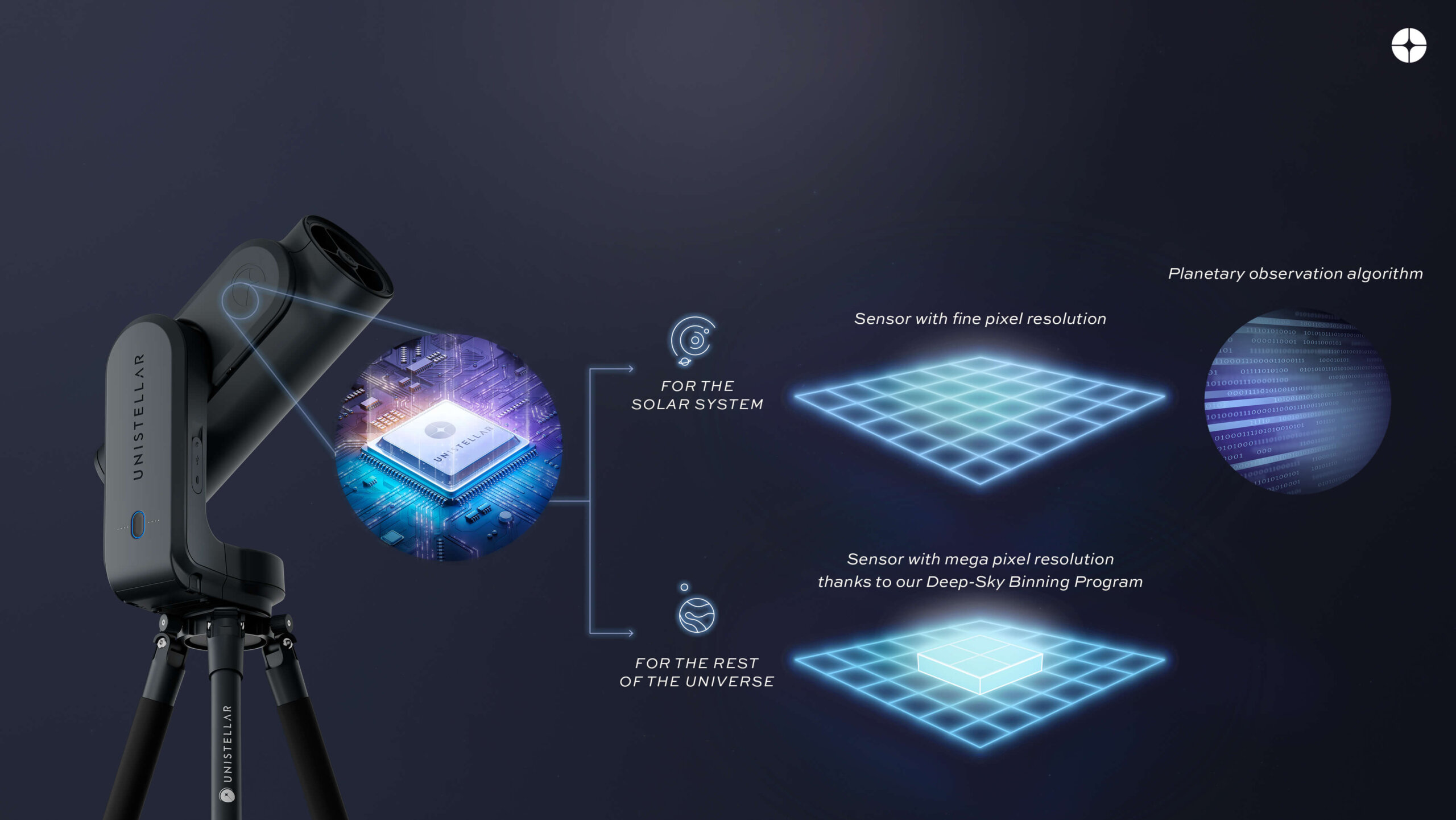UNISTELLAR EXCLUSIVE TECHNOLOGIES
Multi-Depth
Technology
Thanks to UNISTELLAR’s patented Multi-Depth Technology, Odyssey telescopes can now observe both nearby planets and far-off galaxies and nebulae with an unprecedented level of versatility.
Only on ODYSSEY & ODYSSEY PRO smart telescopes
Typically, to observe the solar system—where the planets are bright, small, and close to Earth—you need a long telescope (also known as a “long focal length”), and to observe the rest of the universe—where the objects are far away, spread out, and have low perceived rightness from Earth—you need a shorter telescope (also known as a “short focal length”). This means that traditional telescopes are generally restricted to a single type of observation, making it necessary to switch instruments based on what you want to observe.
With Multi-Depth Technology, UNISTELLAR’s research teams have solved this dilemma. Odyssey telescopes let you travel from our solar system to the farthest corners of the universe without ever changing instruments. There is no need to make adjustments. Everything happens automatically for seamless observation.
How does it work?

Deep-sky binning leverages a technology found in smartphone cameras, for example, in which four neighboring pixels are grouped together to form a single larger pixel. The image processing experts at UNISTELLAR have adapted binning for use in astronomical observation through an innovative algorithm that boosts the sensitivity of the sensor in Odyssey telescopes. This means that ODYSSEY telescopes can pick up more light signal and provide excellent quality for observing faint deep sky objects without requiring a different telescope for solar system observation.
Browse our technologies
Are you tired of only seeing bright dots when observing the night sky through your standard telescope?
Would you like to see the cloudy colorful Nebulaes ? The wonderful shapes and details of Galaxies ? Its sounds impossible but that’s exactly what UNISTELLAR Technologies offer.
Dynamic Signal Amplification
Instantly amplifies the incoming light signal from celestial objects by stacking and processing short exposures in real time.
Deep Dark Technology
Automatically filters out interference from city lights that would otherwise inhibit the digital sensors from picking up the signals from sky objects.
Nikon Eyepiece Technology
ONLY FOR EVSCOPE 2 & ODYSSEY PRO
Provides breathtaking observation quality through a sophisticated lens assembly with OLED micro-display technology for ultra-high contrast.









